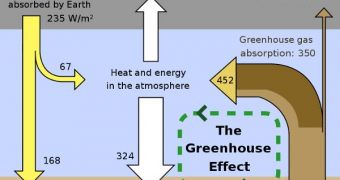According to a new idea, it may be that the effects of global warming are currently simply too great to be mitigated completely or partially. University of Utah Associate Professor of Atmospheric Sciences Tim Garrett reveals that rising carbon dioxide concentrations, of the kind that is currently held responsible as the main trigger of climate change, can only be stopped in its tracks if the world's economy collapses or society builds more than one nuclear reactor per day.
“It looks unlikely that there will be any substantial near-term departure from recently observed acceleration in carbon dioxide emission rates,” he says. The new investigation will appear online this week, in the latest issue of the scientific journal Climatic Change. The publication is being edited by Stanford University climate scientist Stephen Schneider. Garrett's work has already been criticized by some economists, and also refused by several journals, before Climatic Change agreed to publish it.
One of the main ideas in the new study is the fact that energy conservation does not improve the situation. Rather, it provides the framework for economic growth, which is naturally OK, while at the same time making people consume even more energy. Therefore, in the long run, one could argue that consumption levels would have remained lower if it hadn't been for energy-conservation schemes. Garrett also shows that there is no need to consider the population growth and standard of living as indicators of future energy-consumption levels. Throughout history, this link has remained the same, he explains.
“Stabilization of carbon dioxide emissions at current rates will require approximately 300 gigawatts of new non-carbon-dioxide-emitting power production capacity annually – approximately one new nuclear power plant (or equivalent) per day. Physically, there are no other options without killing the economy,” the scientist says. “I'm not an economist, and I am approaching the economy as a physics problem. I end up with a global economic growth model different than they have,” he adds.
“If society consumed no energy, civilization would be worthless. It is only by consuming energy that civilization is able to maintain the activities that give it economic value. This means that if we ever start to run out of energy, then the value of civilization is going to fall and even collapse absent discovery of new energy sources,” Garrett concludes.

 14 DAY TRIAL //
14 DAY TRIAL //